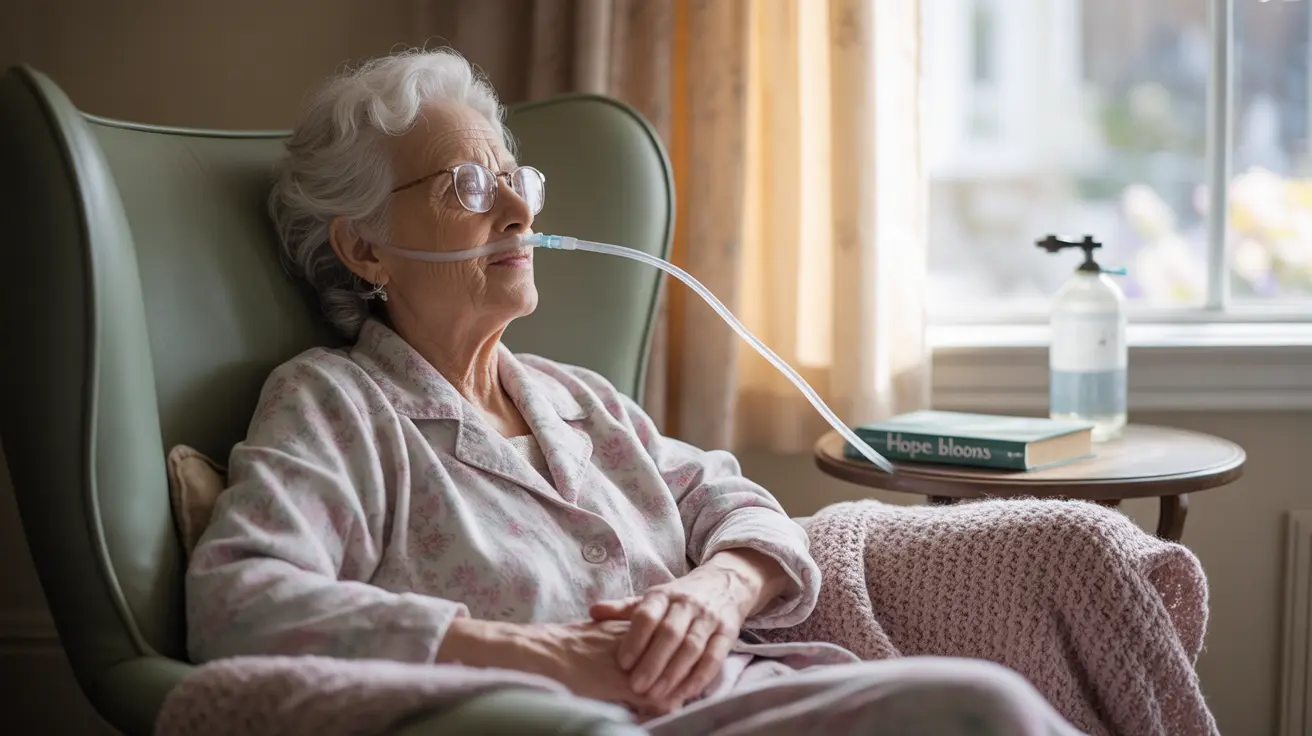End-stage COPD (Chronic Obstructive Pulmonary Disease) brings significant changes to a person's daily life, particularly affecting their sleep patterns and energy levels. Many patients and caregivers notice increased sleepiness and fatigue during this advanced stage, raising important questions about management and care.
This comprehensive guide explores why people with end-stage COPD often experience increased sleepiness, what other symptoms to watch for, and how to manage these challenges effectively while maintaining the best possible quality of life.
Why Increased Sleep Occurs in End-Stage COPD
People with end-stage COPD commonly experience increased sleepiness and fatigue for several key reasons:
- Low oxygen levels in the blood
- Increased energy expenditure for breathing
- Physical exhaustion from respiratory effort
- Effects of medications
- Depression and anxiety associated with chronic illness
The body's need for extra rest during this stage is often a natural response to the increased energy demands of managing severe respiratory disease. The constant effort required for breathing can be exhausting, leading to more frequent rest periods.
Common Symptoms Beyond Breathlessness
While increased sleeping is notable, end-stage COPD presents with various other significant symptoms:
- Severe shortness of breath, even at rest
- Chronic cough with increased mucus production
- Significant weight loss or gain
- Swelling in ankles and feet
- Confusion or memory problems
- Limited ability to perform daily activities
Impact on Daily Activities
The combination of symptoms significantly affects a person's ability to maintain normal daily routines. Simple tasks often become challenging, requiring careful energy conservation and activity planning.
Managing Fatigue and Sleep Changes
Several strategies can help manage fatigue and sleep-related challenges in end-stage COPD:
- Establishing consistent sleep schedules
- Using proper positioning techniques while sleeping
- Implementing energy conservation strategies
- Maintaining gentle physical activity as tolerated
- Working with healthcare providers to optimize medication timing
Treatment Options for Better Breathing
Various treatments can help improve breathing and quality of life:
- Oxygen therapy
- Bronchodilators and other medications
- Pulmonary rehabilitation programs
- Breathing exercises and techniques
- Regular medical monitoring and adjustment of treatment plans
The Role of Supplemental Oxygen
Proper oxygen therapy is crucial in end-stage COPD, often helping to reduce fatigue and improve sleep quality. Working closely with healthcare providers ensures appropriate oxygen levels and delivery methods.
When to Consider Palliative Care
Palliative care becomes an important consideration when symptoms significantly impact quality of life. This specialized care focuses on comfort and symptom management while providing support for both patients and families.
Frequently Asked Questions
Why do people with end-stage COPD sleep a lot and feel extremely fatigued?
People with end-stage COPD sleep more due to the increased energy expenditure required for breathing, low oxygen levels, medication effects, and the body's need to conserve energy. The constant work of breathing with compromised lungs is extremely tiring.
What are the common symptoms and signs of end-stage COPD besides severe breathlessness?
Common symptoms include chronic cough with increased mucus, significant weight changes, swelling in extremities, confusion, limited mobility, and increased fatigue. These symptoms often impact daily activities significantly.
How is fatigue managed in patients with advanced COPD?
Fatigue is managed through a combination of approaches including proper sleep hygiene, energy conservation techniques, guided physical activity, optimal medication management, and appropriate oxygen therapy as prescribed.
What treatments are available to help improve breathing and quality of life in end-stage COPD?
Available treatments include oxygen therapy, medications like bronchodilators, pulmonary rehabilitation, breathing exercises, and regular medical monitoring. These interventions aim to optimize breathing and maintain comfort.
When should palliative or hospice care be considered for someone with end-stage COPD?
Palliative care should be considered when symptoms significantly impact quality of life and standard treatments no longer provide adequate relief. This care focuses on comfort and support while managing symptoms effectively.




